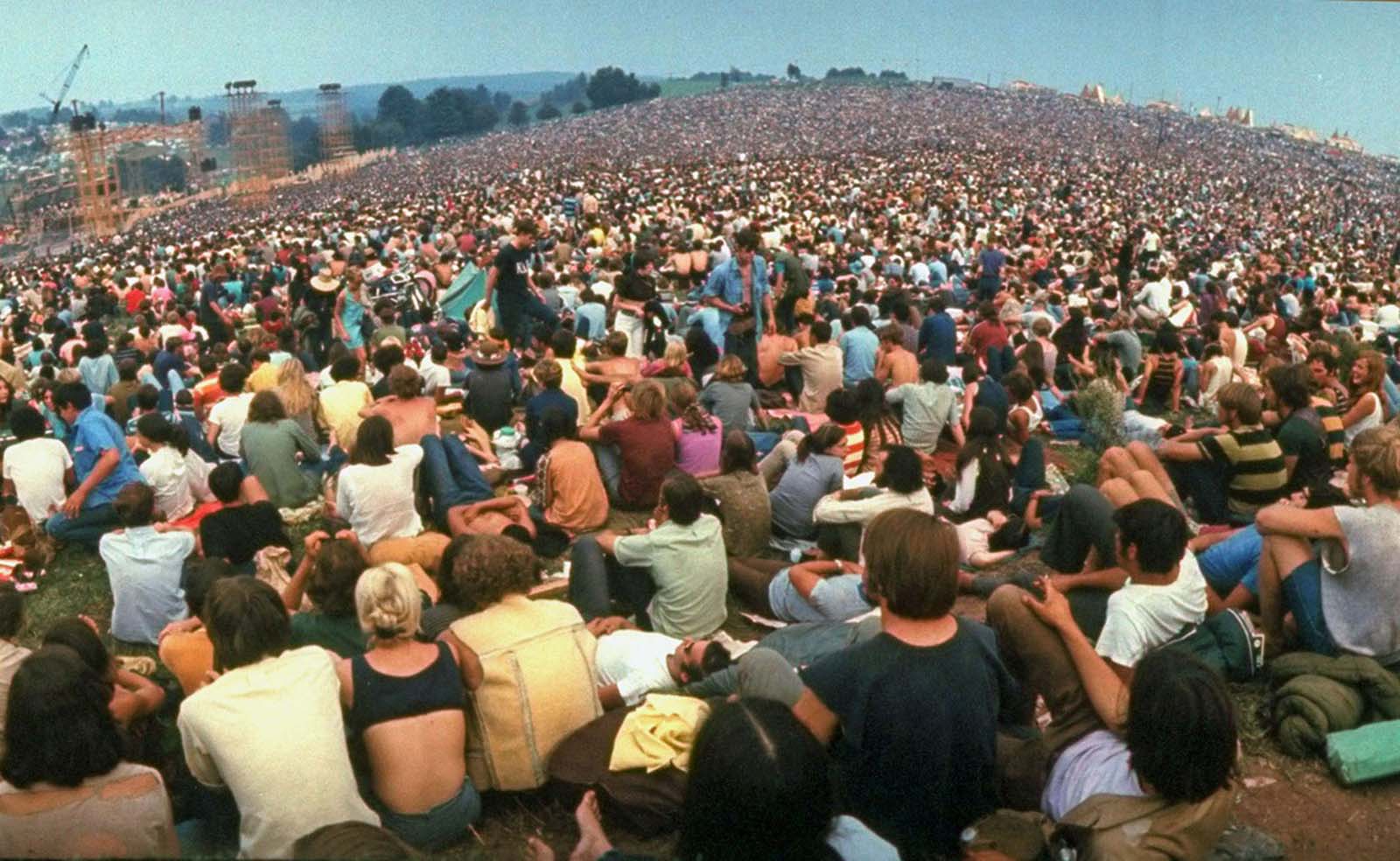
In the radiant summer of 1969, the idyllic town of Bethel, New York, would bear witness to an event that would become the anthem of a generation. Over 400,000 free spirits, music lovers, and dreamers flocked to a sprawling dairy farm owned by the kind-hearted Max and Miriam Yasgur. The venue: the Woodstock Music & Art Fair. An emblematic fiesta that resonated with the very heartbeat of the 1960s counterculture movement.
Yet, Woodstock wasn’t just a festival; it was an odyssey filled with trials and triumphs. It began as a vision shared by four ambitious young men under 27: John Roberts, Joel Rosenman, Artie Kornfeld, and Michael Lang. As they converged to form Woodstock Ventures, Inc., their shared dream was to host a musical gala that would echo for ages. Their journey was fraught with challenges, especially finding an ideal location for their grand vision.
It wasn’t until they stumbled upon Max Yasgur, a 49-year-old dairy farmer with a heart as vast as his farmlands, that they found their promised land. The serene White Lake region, cocooned by the majestic Catskill Mountains, was to be their Eden. Time, however, was not their ally. With merely a month to set the stage, the stakes were astronomical.
Imagine the frenetic hustle: workers hammering away to erect stages, setting up intricate booths for eager attendees, the hum of generators powering makeshift concession stands, and the canvas of medical tents and bathrooms being staked across the fields. The sounds of rehearsals punctuated the air, foretelling the musical nirvana that awaited. Yet, as attendees began pouring in, waves upon waves, the infrastructure struggled to keep pace. Fencing, entrance gates, and ticket booths lay unfinished.
And then, nature too decided to play its part. Rain descended, but instead of dampening spirits, it added to the festival’s lore. With music in the air and mud underfoot, Woodstock became a dance of unity, love, and freedom. Amidst the rock ‘n’ roll, the sharing of stories, the sporadic downpours, and the ethereal haze of peace (and pot), Woodstock immortalized itself as more than just a festival—it became a defining moment in pop culture.

In the simmering haze of August 1969, the quiet pastoral expanse of Woodstock braced itself for what was intended to be a gathering of 50,000 souls. Yet, as the 13th of August dawned, those numbers had already taken root on the farmlands, tents sprouting like wildflowers. A palpable sense of anticipation hung thick as pre-sold tickets soared over 100,000, and an oceanic tide of a million individuals surged towards this beacon of music and freedom.
The thoroughfares and veins of the town were choked with an endless caravan of vehicles. Frustrated but undeterred, many embraced the spirit of adventure, leaving their cars behind to traverse the landscape on foot. When the music began, half a million voices sang, cheered, and reveled in harmony.
The congregation at Woodstock was a living tapestry of an age on the cusp of change. Among them were the free-spirited hippies, disillusioned by a world obsessed with possessions. The shadow of the divisive Vietnam War loomed large, its weight pressing down on the shoulders of countless youngsters who fervently rallied against it.
This was also the pulsating heartbeat of the civil rights era, an age marked by turbulence and fervent cries for justice. Yet, in this ephemeral bubble in time, Woodstock became an oasis. A sanctuary where music was the balm, and unity and peace, the clarion calls.
Despite Mother Nature’s whims, leading to rain-soaked grounds and mire, the spirit of the attendees remained unbroken. While some believe that the pervasive sense of tranquility was aided by the liberal use of psychedelic substances, others argue it was the very essence of the hippie ethos – to choose love over conflict. Euphoria floated through the air, and many found love in its most primal and intimate form, surrendering to their desires amidst the backdrop of a musical utopia.
The roll call of musicians who graced the stage reads like a who’s who of rock legends: Joan Baez, Santana, the Grateful Dead, Creedence Clearwater Revival, Janis Joplin, and the electric wizardry of Jimi Hendrix, to name but a few. As Hendrix’s guitar wept its last note on the 18th, the monumental gathering began its exodus. The journey out echoed the chaotic entry, roads once again seized by a relentless tide of humanity.
As the final footprints began to fade, the task of returning the farmland to its pristine glory commenced. It was an endeavor of Herculean proportions, involving bulldozers, a fortune, and an unyielding spirit.
Yet, amidst the swirling memories, perhaps the most poignant words came from the land’s guardian, Max Yasgur. Gazing out at the sea of youth, he proclaimed, “…You’ve shown the world… that a half a million young souls can unite in joy and song, and for three days revel solely in melody and camaraderie. And for that, God bless each and every one of you.”.



























(Photo credit: The LIFE Picture Collection / Getty).




Leave a Reply